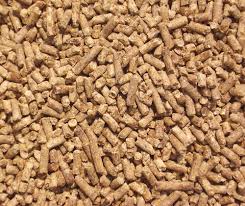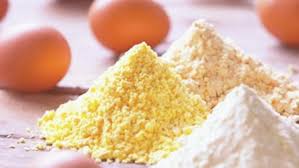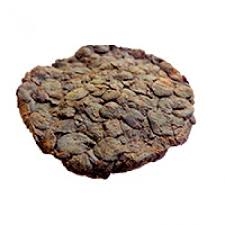Large Scale Poultry Feed Production in Nigeria; The Feasibility Report.

Nigeria, with a population of about one hundred and eighty (180,000,000) people is grossly under-provided with an essential food component, which is protein. For example, data from the FOS, CBN, and FAO indicate that from cattle, less than 2kg of beef is available to an average Nigerian per year and just mere 4kg of eggs per annum is available to each Nigerian.
In fact, milk production has been nose diving or at best has remained constant since 1994.This scenario is compounded more so when the volume of egg supply is very low, being 10.56 g per person per day as compared with the usual recommendation that an egg should be consumed by an adult per day. This recommendation would imply a crate of 30 eggs per month. This story also holds for other meat products including, chicken.
To ameliorate this problem of low-level of protein intake, there is the need for concerted effort, among the various stakeholders to bring about the massive production of protein based food items at competitive costs so that they would be affordable to the general masses. Aside from the other necessary economic reforms, massive investment poultry farming is one way of resolving the problem and invariably in the production of livestock feeds.
Poultry birds require different food formations at different stages of their lives. Some of the feed required is chicks mash, layers mash, broiler mash and growers mash.
However, the advancement in the poultry sector in Nigeria is currently being undermined by the escalating cost of feeds. Previous studies have shown that the high cost of compound feeds for poultry is derived largely from the exorbitant prices of feed ingredients, increasing competitive demand for them and scarcity of the conventional ingredients.
In order to reduce the feed cost which accounts for about seventy percent (70%) of the total cost of poultry production indigenous poultry feed enterprises came into existence. Most small scale poultry enterprises now depend on these indigenous feed rations.
The raw materials are sourced locally. The feed constitutes mainly of maize, sorghum spent grains, groundnut cake, soya bean meal, fish meal and bone meal.
This report examines the financial viability of establishing a livestock feed processing plant in Nigeria.
The installed capacity of the proposed plant is one hundred and twenty (120) tons of poultry feed operating per day and the plant would operate at seventy-five percent (75%) of the installed capacity for double (2) shifts of eight (8) hours each in the first, second, third, fourth and fifth year of operations respectively and producing sixty (90) tons of various types of poultry feeds namely growers mash, layers mash, broilers mash and chick mash per day.
The plant would produce forty-five thousand (45,000) bags of 25 kg of growers’ mash, forty-five thousand (45,000) bags of 25 kg of broilers mash, forty-five thousand (45,000) bags of 25 kg of layers’ mash and forty-five thousand (45,000) bags of 25 kg of chick mash each bi-monthly.
Table of Contents
EXECUTIVE SUMMARY 1.0 Business Overview 1.1 Description of the Business 1.2 Vision and Mission Statement 1.3 Business Objective 1.4 Value Proposition 1.5 Critical Success Factor of the Business 1.6 Current Status of Business 1.7 Description of the Business Industry 1.8 Contribution to Local and National Economy 2. Marketing Plan 2.1 Description of product 2.2 Product Packaging and delivery 2.3 The Opportunity 2.4 Pricing Strategy 2.5 Target Market 2.6 Distribution and Delivery Strategy 2.7 Promotional Strategy 2.8 Competition 3. Production Plan 3.1 Description of the Location 3.2 Raw Materials 3.3 Production Equipment 3.4 Production Process 3.5 Production Cost 3.6 Stock Control Process 3.7 Pre-Operating activities and expenses 3.7.1 Operating Activities and Expenses 3.8 Project Implementation Schedule 4.0 Organizational and Management Plan 4.1 Ownership of the business 4.2 Profile of the promoters 4.3 Key Management Staff 4.3.2 Management Support Units 4.4 Details of salary schedule 5. Financial Plan 5.1 Financial Assumption 5.2 Start- up Capital Estimation 5.3 Source of Capital 5.4 Security of Loan 5.5 Loan Repayment Plan 5.6 Profit and Loss Account 5.7 Cash Flow Analysis 5.8 Viability Analysis 6.0 Business Risks and SWOT Analysis 6.1 Business Risks 6.2 SWOT Analysis
Project Specification:
Additional Info
Get this Report
Direct bank transfer
To order the report, Please do pay the sum of ₦150,000 into
Account Name : Foraminifera Market Research Ltd
Account Number : 274 20 569 37
Account Name : Foraminifera Market Research Ltd
Account Number : 101 76 603 95
Account Name : Foraminifera Ventures
Account Number : 011 66 066 32
Make your payment directly into our bank account. Please use your Order ID as the payment reference. Your order will not be shipped until the funds have cleared in our account.
Instructions
After payment call us on 01 -29 52 413 / 08033782777 or email us at foraminiferamarketresearch@yahoo.com with the payment details. After payment confirmation, the soft copy of the report would be sent to you within 24 hours.



